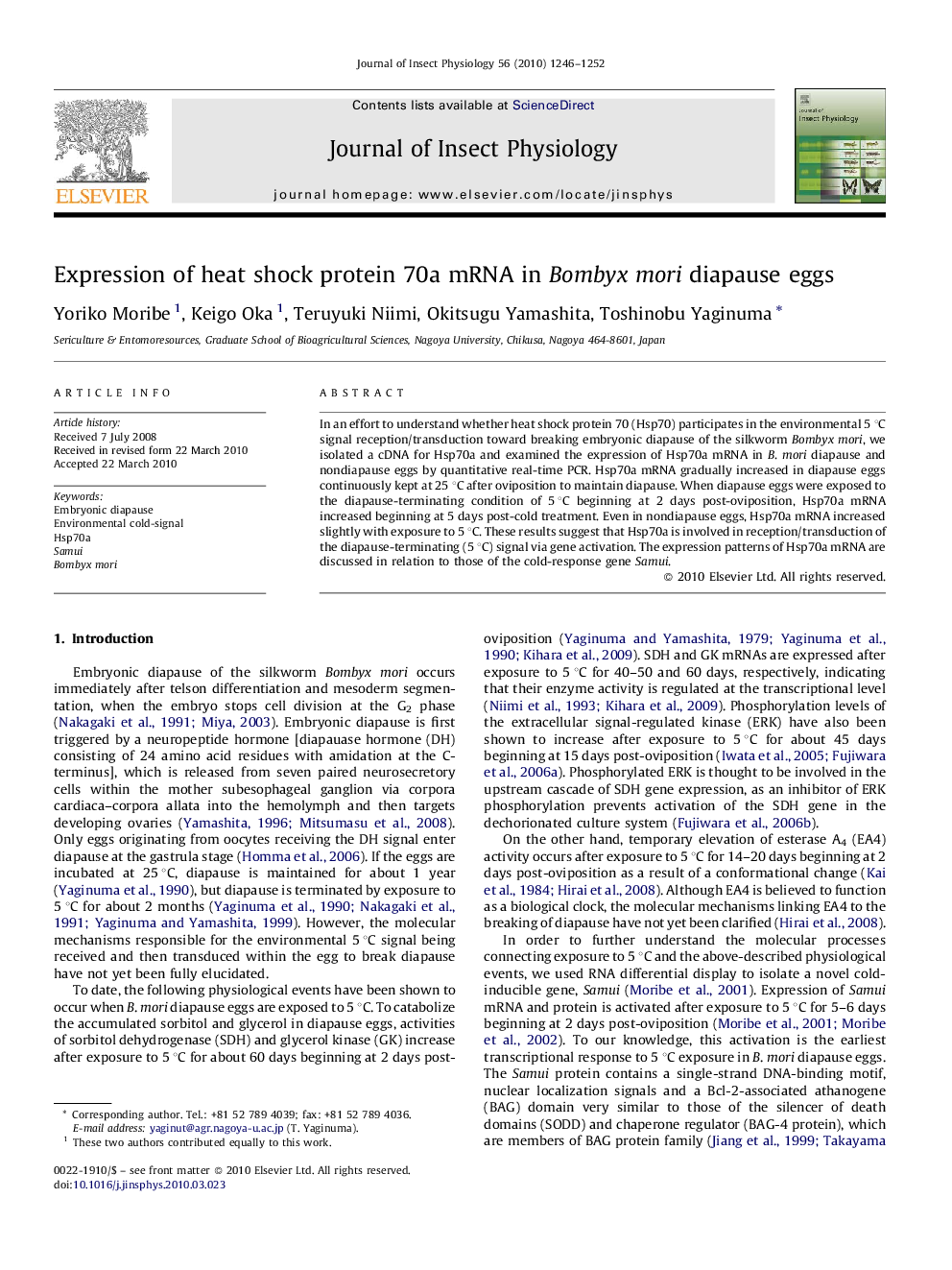| Article ID | Journal | Published Year | Pages | File Type |
|---|---|---|---|---|
| 2840940 | Journal of Insect Physiology | 2010 | 7 Pages |
In an effort to understand whether heat shock protein 70 (Hsp70) participates in the environmental 5 °C signal reception/transduction toward breaking embryonic diapause of the silkworm Bombyx mori, we isolated a cDNA for Hsp70a and examined the expression of Hsp70a mRNA in B. mori diapause and nondiapause eggs by quantitative real-time PCR. Hsp70a mRNA gradually increased in diapause eggs continuously kept at 25 °C after oviposition to maintain diapause. When diapause eggs were exposed to the diapause-terminating condition of 5 °C beginning at 2 days post-oviposition, Hsp70a mRNA increased beginning at 5 days post-cold treatment. Even in nondiapause eggs, Hsp70a mRNA increased slightly with exposure to 5 °C. These results suggest that Hsp70a is involved in reception/transduction of the diapause-terminating (5 °C) signal via gene activation. The expression patterns of Hsp70a mRNA are discussed in relation to those of the cold-response gene Samui.
